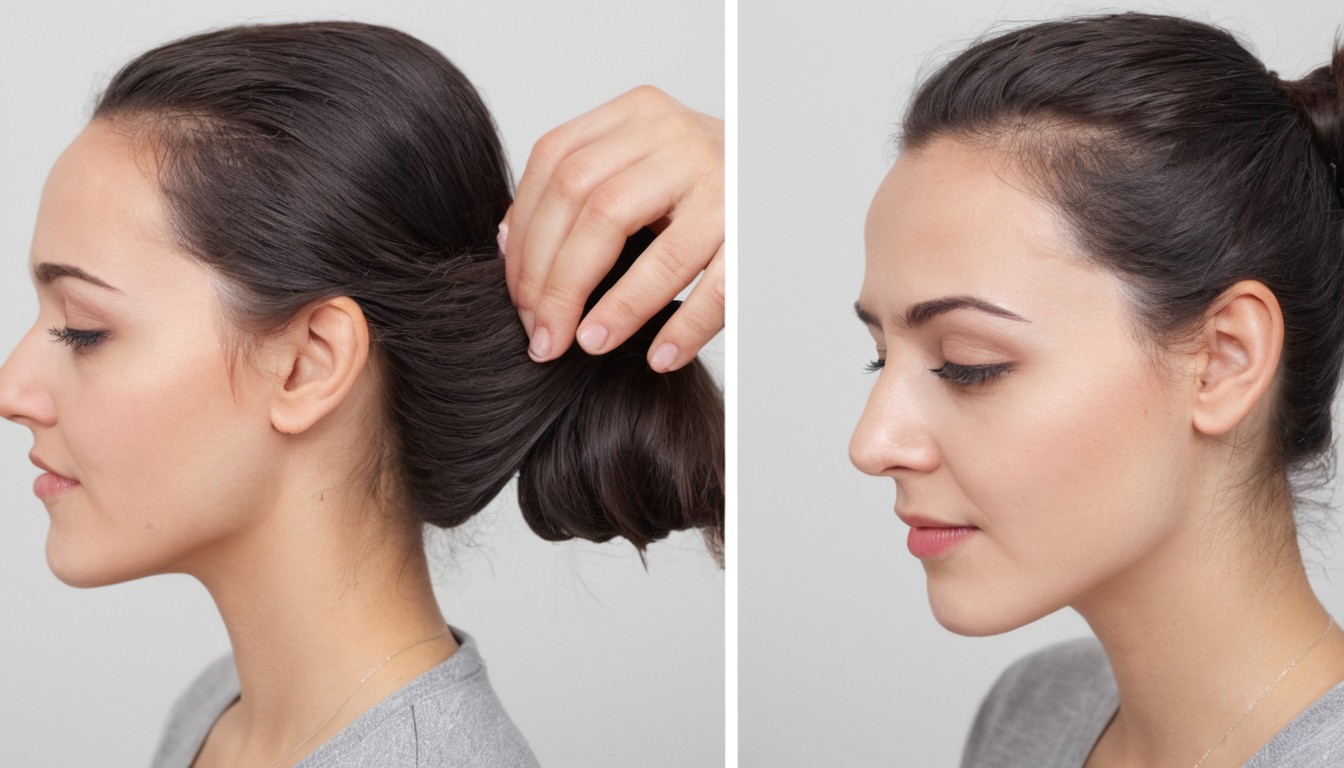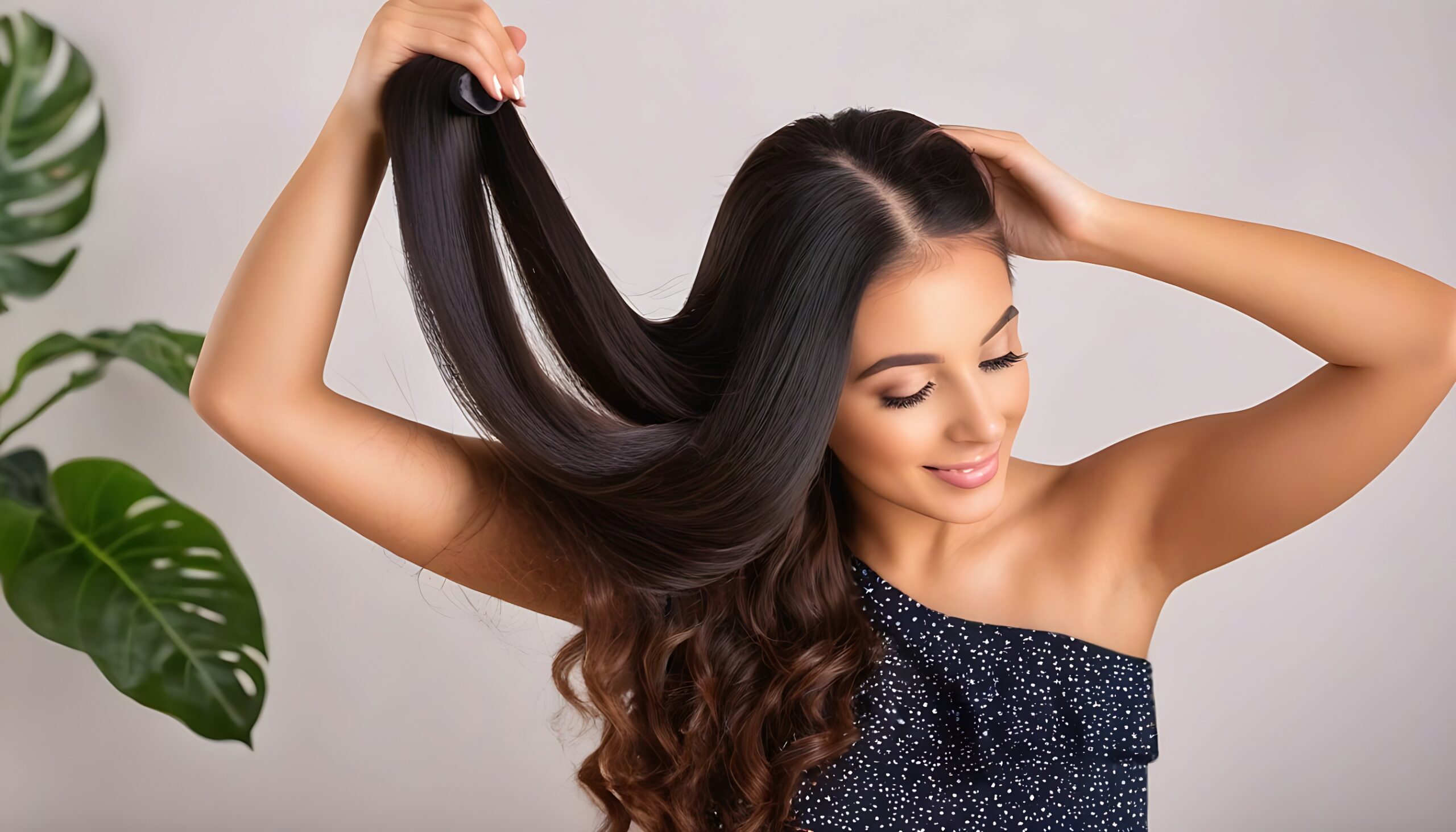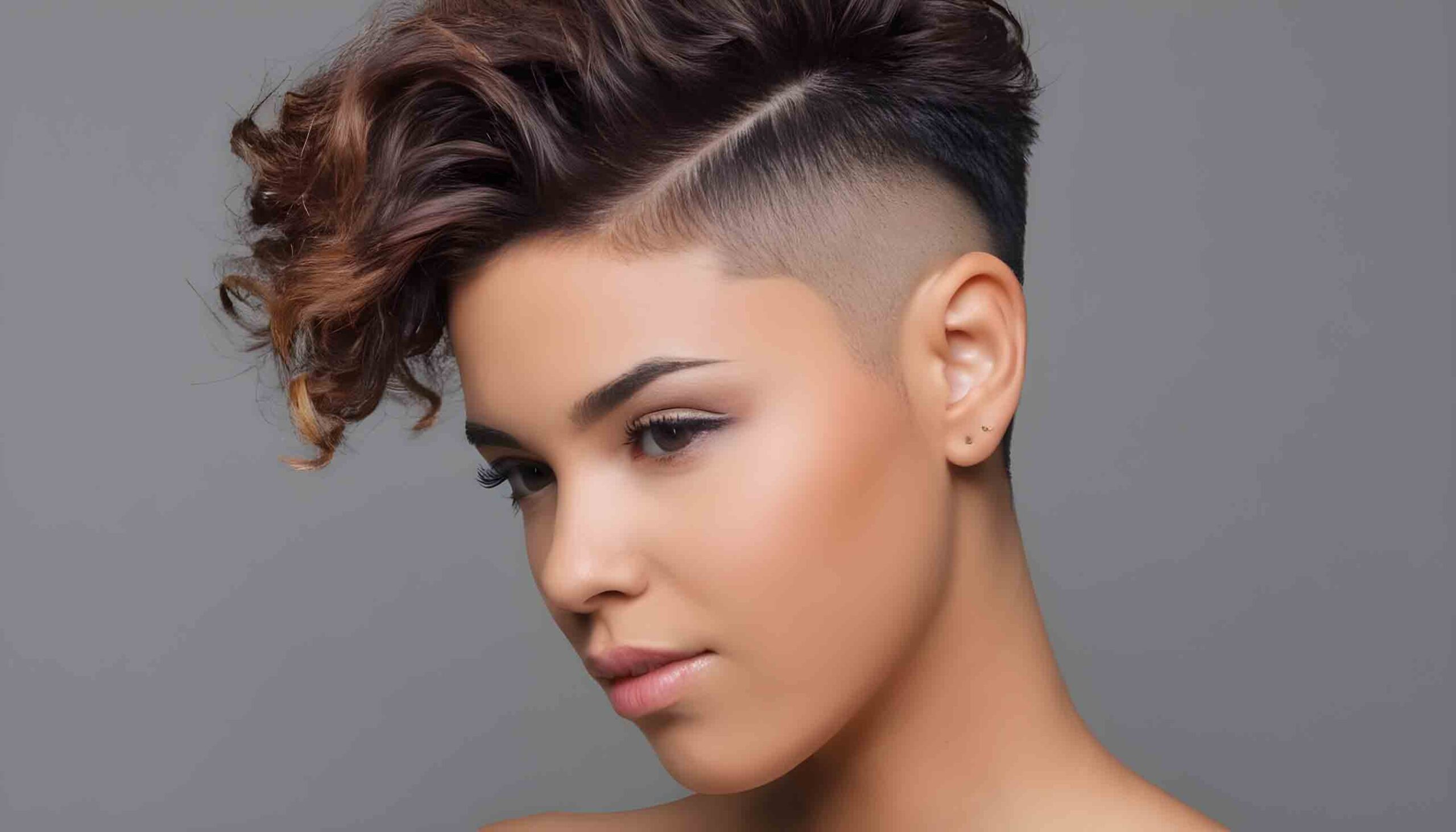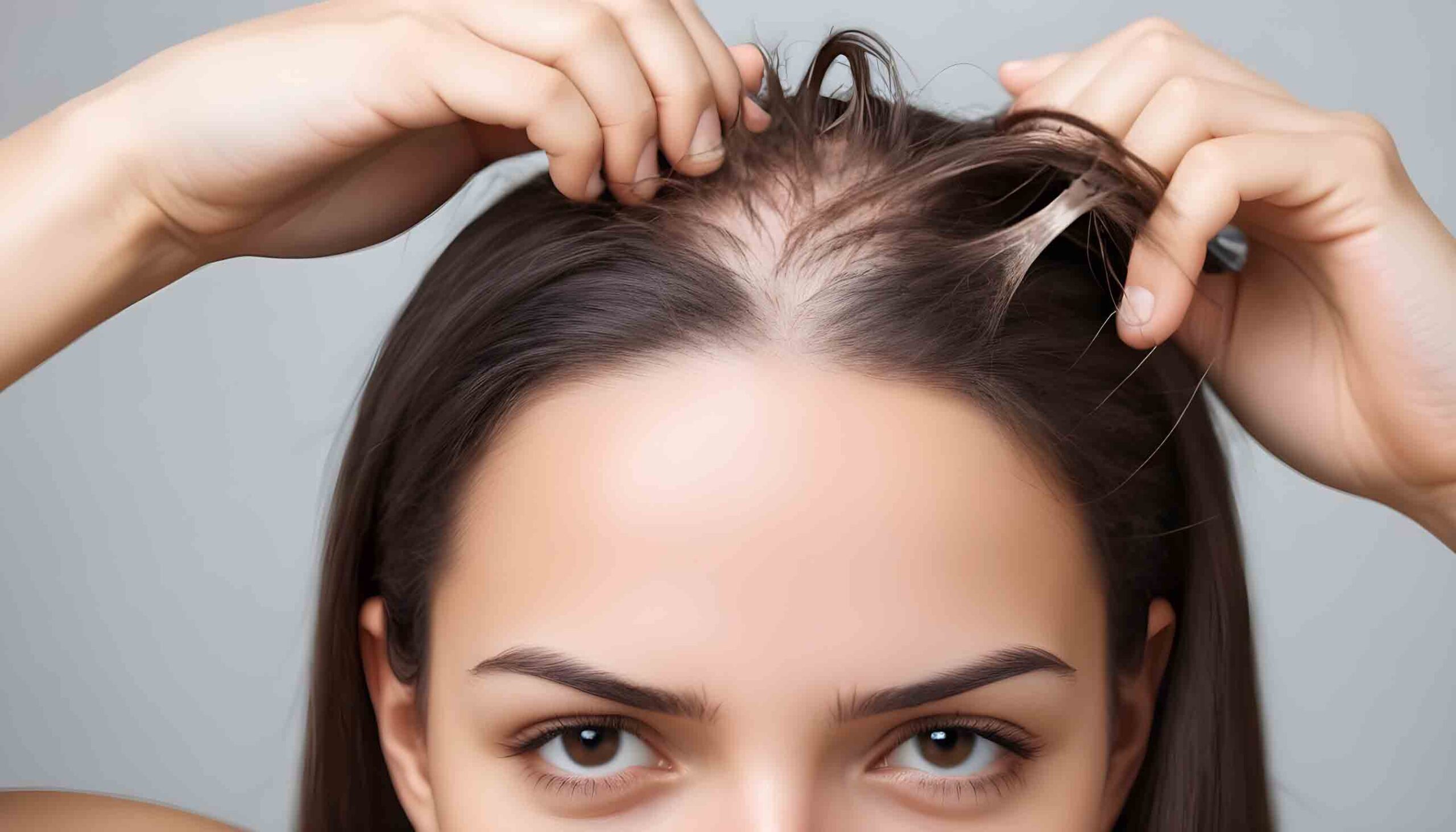Learn how to build a daily and weekly hair care routine tailored to your hair’s unique texture and needs. Discover tips for cleansing, conditioning, styling, and protecting your hair.
The title summarizes that the article will provide guidance on building a customized hair routine. It focuses on the keyword “hair care routine.”
The meta description expands on the title, explaining the article will offer specific tips for daily and weekly haircare based on your hair type. It highlights topics like cleansing, conditioning, and protecting hair.
Together, the title and meta description indicate the article will offer comprehensive advice and techniques for establishing an effective personalized hair care regimen. The keyword is prominently featured while providing readers context about what the article will cover in depth.
Let me know if you would like me to modify or refine the title or description further to optimize it for search and click-through rates! I’m happy to provide additional options.
The Beginner’s Guide To Building A Daily Hair Care Routine
How to Establish the Right Hair Care Routine for You
Your hair care routine is an essential part of maintaining healthy, beautiful hair. Having an effective daily and weekly routine suited to your specific hair type and needs is key to boosting hair health and achieving your desired look.
While there is no single routine that works for everyone, there are some general guidelines and components that provide a framework for building your personalized hair care regimen. Read on for tips on creating a hair care routine that promotes stronger, shinier, more vibrant locks.
Your individual routine ultimately depends on a few factors:
Your natural hair texture or type
- Fine, medium, or thick
- Straight, wavy, curly, or kinky
The texture and thickness of your hair impact how it responds to different products and techniques. Fine, porous hair may get weighed down by heavy conditioners, while very curly and kinky hair benefits from extra moisturizing formulas.
Whether your hair has been bleached, dyed, or otherwise chemically processed
Chemical processing like bleach, dye, perms, and relaxers can damage and dry out hair over time. If your hair is color-treated or chemically processed, use gentler cleansers and extra conditioning products to keep hair healthy.
How you want to wear your hair daily
- Up or down
- Straight, curly, etc.
Consider how you style your hair day-to-day, whether it’s worn straight, curly, up, or down. Tailor your Hair Care Routine to include the right styling products and tools to achieve your desired looks.
Whether you have specific concerns that you want to address
- Dryness, damage, excess oil, etc.
If you have issues like dryness, greasiness, damage, or hair loss, select products that target those specific needs in your routine. For example, if your hair is dry, focus on hydrating shampoos, masks, and oils.
However, every Hair Care Routine shares a few basic components:
Cleanse
Thoroughly cleanse hair and scalp to remove dirt, oil, and product buildup. How often you shampoo depends on your hair type. Daily washing may dry out thick, curly hair while fine, oily hair may need more frequent shampooing.
Condition
Nourish and moisturize hair with conditioner after shampooing. Let sit for a few minutes before rinsing out. Use a leave-in conditioner on damp hair if extra moisture is needed.
Moisturize and seal
Curly and oily hair benefits from regular moisturizing with creams or oils to keep hair supple and defined. “Sealing” with oil or butter helps lock in moisture.
Detangle
Gently work through tangles and knots using a wide-tooth comb, wet brush, or fingers. Avoid excessive brushing on wet hair. Work in sections from tips to roots.
Style and protect
Blow dry, flat iron, curl, or air dry as desired while protecting hair from heat damage. Set styles with products like mousse, gel, etc.
Spot-treat
Target extra conditioning or oil control where needed. Use masks, oils, serums, etc. on specific areas rather than heavily coating all hair.
The products and tools used in each step vary widely:
Cleansing and conditioning
- Shampoos: hydrating, clarifying, volumizing, color-safe, etc.
- Conditioners: creams, deep treatments, leave-ins, rinse-outs, etc.
- Tools: shampoo brush, wide-tooth comb, shower comb, etc.
Moisturizing and sealing
- Oils and butter: argan, coconut, shea, etc.
- Creams and milks
- Hydrating sprays and gels
Detangling
- Detangling spray, cream, or oil
- Wide-tooth comb, Denman brush, wet brush, etc.
- Fingers!
Styling and protecting
- Heat protectant sprays and creams
- Hair dryers, flat irons, curling wands, rollers, etc.
- Mousses, gels, pomades, etc. for hold
Treatments
- Deep conditioners and masques
- Oils for scalp massage
- Clarifying shampoos
- Protein treatments
The order of your routine matters and consistency is key. But when it comes to frequency of use, it’s best to consult a professional trichologist or stylist to assess your hair and make personalized recommendations.
Your individual hair needs will naturally change over time. Hormones, seasons, age, and events like pregnancy can all impact your hair texture and health. Adjust your routine accordingly.
A good rule of thumb is to swap products as the seasons change. In summer, lighter, more clarifying products may suit you better. In winter, you may need more intensive conditioning.
Some general tips and tricks that benefit all hair types:
- Get regular trims every 8-12 weeks to prevent split ends and maintain healthy hair shape. Let your stylist assess if more frequent trims are needed.
- Wash hair with lukewarm water instead of hot, which can cause damage and dryness. Rinse thoroughly.
- Limit the use of hot tools like flat irons, curling wands, and hair dryers when possible. Always use a heat protectant spray or serum if heat styling.
- Eat a balanced, nutrient-rich diet with foods like avocados, nuts, eggs, and salmon to nourish hair from within. Stay hydrated and minimize sugary, fatty, processed foods.
- Reduce stress through yoga, meditation, massage, and other activities. High stress can affect hair growth. Get enough sleep.
- Try protective styles like loose braids, buns, or silk scarves at night to limit damage from friction and breakage.
- Handle wet hair gently. Limit brushing to when hair is damp or dry, not soaking wet.
- See your stylist regularly to maintain your haircut, treat split ends, and get expert guidance.
- Look for formulas without sulfates, parabens, or silicones if you have very dry or damaged hair. Or use those ingredients sparingly.
- Switch up your products seasonally. Use thicker, more nourishing products in winter and lighter formulas in summer.
With some trial and error, you’ll find the ideal daily and weekly Hair Care Routine for your unique hair. Don’t be afraid to tweak your regimen if your hair’s needs change. Consult a haircare professional like a licensed stylist or trichologist if you need guidance. Healthy, happy hair starts with the right personalized routine.
Wavy Hair Care Routine
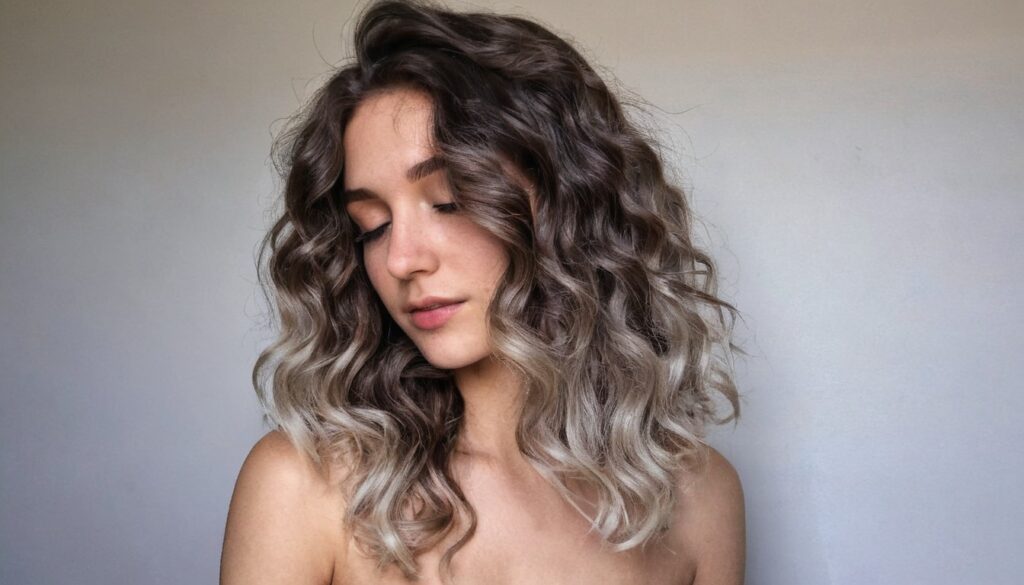
Developing a solid wavy hair care routine is key to bringing out your gorgeous texture and minimizing frizz. Wavy hair is prone to dryness so moisturizing and using gentle products is essential. Here’s an overview of a daily and weekly routine to care for waves.
Wash wavy hair 2-3 times per week max to avoid stripping natural oils. When shampooing, use a sulfate-free, hydrating formula focusing just on the scalp and roots. Condition generously from mid-shaft to ends with a creamy moisturizing conditioner, detangling strands with a wide-tooth comb. Rinse thoroughly.
After washing, apply a leave-in conditioner or styling cream containing ingredients like oils and shea butter. This helps provide moisture to the lengths without weighing hair down. Diffuse waves with a hair dryer using a low heat setting. Air drying also brings out waves nicely.
In between washes, refresh wavy hair by spritzing dry shampoo at the roots and scrunching a curl cream through the lengths. Redefine waves with your fingers or a diffuser as needed. Avoid over-brushing.
Weekly, treat hair with a deep conditioning hair mask. The extra hydration helps boost smoothness and shine in waves while reducing frizz. A scalp massage will stimulate blood flow and promote growth. Clarify monthly buildup with an apple cider vinegar rinse.
Getting trims every 8-10 weeks keeps wavy hair healthy. Using heat protectants, sleeping on a silk pillowcase, and staying hydrated also help maintain soft, defined waves and reduce dryness.
Hair Care Routine for Wavy Hair
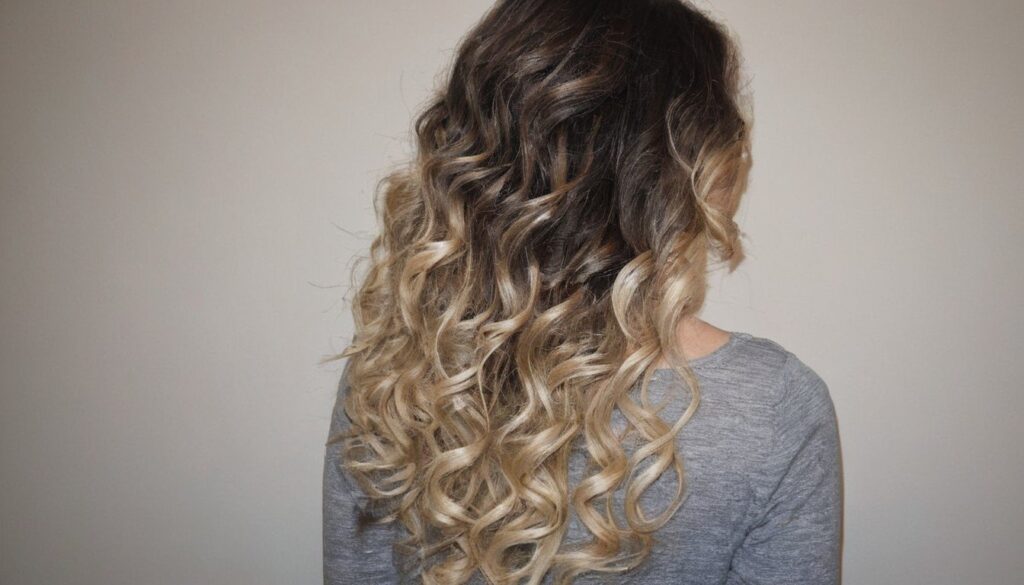
Wavy hair has unique needs when it comes to care and styling. Here are some tips for building a hair care routine that brings out the best in natural waves and enhances texture.
Cleansing wavy hair calls for a gentle, hydrating shampoo to avoid dryness. Focus lather on roots and scalp, then rinse thoroughly. Follow with a moisturizing conditioner from mid-lengths to ends, detangling strands with a wide-tooth comb. Limit washing to 2-3 times per week max.
For styling, apply a leave-in conditioner or curl cream to towel-dried hair to boost moisture. These hydrating products enhance waves without weighing hair down. Diffuse hair gently on a low setting or air dry for best results.
Between washes, dry shampoo cleans hair at the roots while a curl-enhancing mousse or gel refreshes waves. Use your fingers to scrunch and define strands. Sleep on a silk pillowcase to reduce friction.
Deep conditioning treatments are vital for wavy hair. Use a hydrating hair mask weekly to increase softness and shine while minimizing frizz. An oil scalp massage stimulates circulation. Clarify monthly to remove buildup.
When heat styling, always prep with a thermal protectant. Get trims every 8-10 weeks to prevent split ends. Stay hydrated, use a humidifier, and avoid overwashing to maintain balanced moisture levels.
Having the right routine that provides moisture and emphasizes waves’ natural texture is key. With the proper products and techniques, wavy hair can look healthy, defined, and frizz-free.
Hair Care Routine for Hair Growth
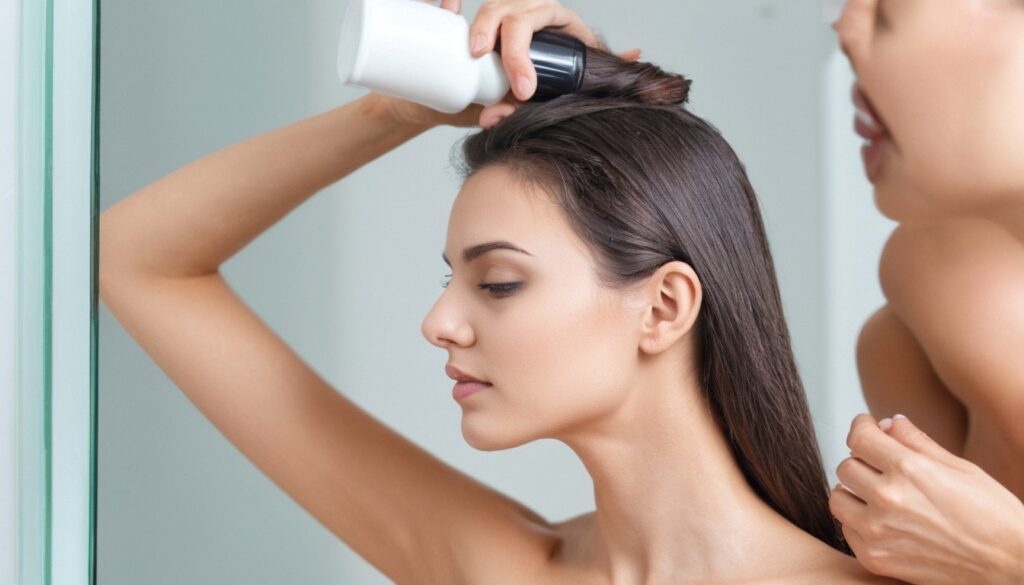
Achieving faster, healthier hair growth requires a targeted hair care routine. Here are some tips for stimulating hair growth through smart daily and weekly regimens.
Start with a volumizing, caffeine-infused shampoo to promote circulation and remove buildup from the scalp. Condition hair gently, focusing from mid-lengths to ends. Limit washing to 2-3 times per week to maintain moisture.
A scalp massage for 5-10 minutes daily maximizes circulation, bringing nutrients to hair follicles. Use fingertips to rub small circles around the scalp. Warm coconut or castor oil helps boost density as you massage.
Getting a monthly scalp treatment from your stylist chemically exfoliates and deep cleans the scalp of dirt, oil, and dead skin cells that can block follicles. A clarifying shampoo weekly also helps.
Eat a balanced, protein-rich diet and stay hydrated for overall health. Biotin, zinc, iron, and vitamin C supplements support growth but check with your doctor first. Protect hair from breakage by using silk accessories, limiting brushing, and avoiding heat tools daily.
Trimming every 6-8 weeks gets rid of split ends so strands can grow longer and stronger. Use a deep-conditioning hair mask weekly and sleep on a silk pillowcase. Reducing stress through yoga, meditation or massage also aids growth.
With a consistent routine using growth-enhancing products, scalp stimulation, trims, diet, and protection methods, you can help encourage thicker, faster, longer hair over time. Patience is key for optimal results.
Curly Hair Care Routine
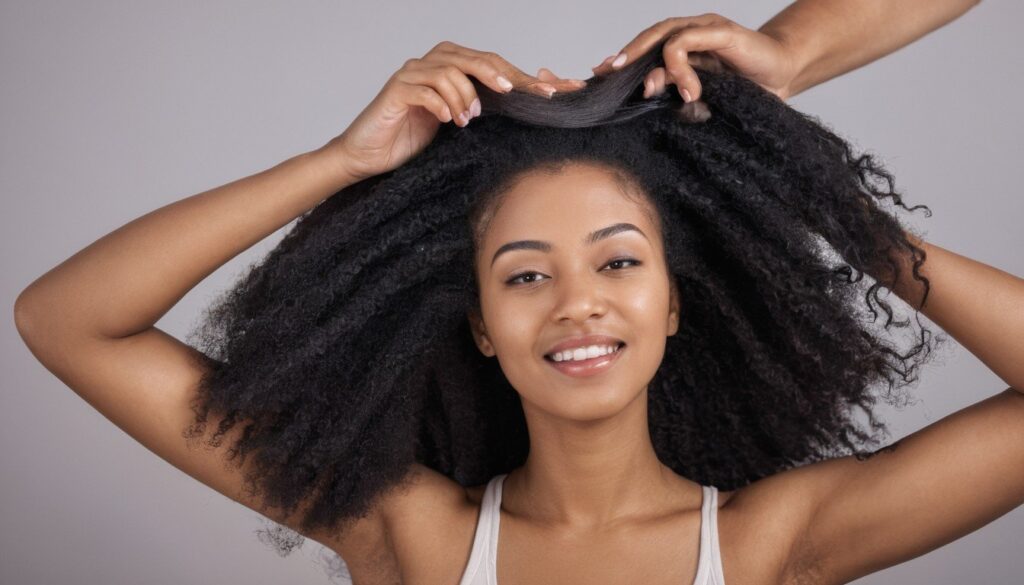
Embracing your natural curls requires the right routine focused on hydration and enhancing texture. Here are some tips for taking care of curly and oily hair.
Wash curly hair 1-2 times per week at most with a sulfate-free, moisturizing shampoo. Co-wash midweek with a cleansing conditioner to refresh curls. Deep condition weekly with a hair mask.
After shampooing, apply a curl-enhancing leave-in conditioner or cream. Finger coil curls in sections and let air dry or diffuse gently with a hairdryer on low heat.
Sleep on a silk pillowcase to reduce friction and dryness. In the AM, mist curls with water to reactivate the product, then gently finger detangle or use a wide-tooth comb.
Oils like argan, coconut, and jojoba are great for sealing in moisture and adding shine. Apply sparingly to ends to avoid greasiness.
Style curls by scrunching in a curl cream or mousse. Define spirals with a Denman brush. Air drying enhances texture.
Getting regular trims is key to preventing splits while hair is curly. Deep condition weekly and use satin accessories at night for protection. Stay hydrated and limit heat styling.
With the right gentle cleansing, frequent conditioning, moisturizing, and styling methods, curly hair will thrive. Embrace your gorgeous coils by tailoring your Hair Care Routine to accentuate curls.
Daily Hair Care Routine
Your daily hair care routine is the foundation for maintaining strong, healthy hair day to day. Here are the basic steps:
Shampoo Or Dry Shampoo
- For oily hair, shampoo daily is fine. Use a gentle, sulfate-free formula.
- For dry hair, limit shampoo to 1-2 times per week. Or use dry shampoo to refresh.
- Apply shampoo to wet hair, lather up roots well while gently massaging the scalp.
- Rinse thoroughly and follow with conditioner.
Conditioner
- After shampooing, apply conditioner from mid-lengths to ends. Use sparingly on roots if the hair is oily.
- Let sit for 3-5 minutes, then rinse thoroughly.
- Use a wide-tooth comb or wet brush to gently detangle while conditioned.
Leave-in Conditioner
- Apply a leave-in conditioner or cream if the hair needs extra moisture.
- Focus on the lengths and ends, not the roots.
- Comb through to evenly distribute product and nourish hair.
Styling
- Apply any thermal protectants before heat styling.
- Blow dry, flat iron, or curl hair as desired while being gentle.
- Air dry when possible to limit damage from heating tools.
- Finish with any holding products like mousse, gel, or hairspray.
Drying
- Blot hair gently with a towel to remove excess water after washing.
- Avoid rubbing hair vigorously with a towel. Allow to air dry when possible.
- If heat drying, use a diffuser attachment for curly hair. Keep dryer on low, medium heat.
- Let hair fully dry before going to sleep to avoid damage and breakage.
This covers the daily essentials for most hair types and styles. Consistency is key, but don’t be afraid to make adjustments as your hair needs to change.
Condition | Moisturizing conditioner | Apply mid-lengths to ends, detangle with a wide-tooth comb, and leave on for 5 mins
Leave-in | Hydrating leave-in conditioner | Apply to damp hair, comb through to distribute | | Heat Protect | Thermal protectant spray | Section hair, spray evenly before heat styling| | Style | Blow dryer + round brush | Blow dry sections smoothly using brush |
| Finish | Medium hold hairspray | Spritz all over to set style in place |
Weekly Hair Routine
In addition to your daily regimen, a weekly hair care routine helps boost hair health, manageability, and beauty. Try these treatments weekly:
Deep Condition
- Apply an intensive hair mask or thick conditioner weekly.
- Coat hair generously root to tip and let sit for 30+ minutes before rinsing.
- Deep conditioning repairs damage, restores moisture, and improves texture.
Oil Massage
- Massage warm oil into your scalp and lengths for 10+ minutes weekly.
- Stimulates blood flow to aid growth and nourishes hair.
- Oils like coconut, olive, almond, or castor work well.
Clarifying Treatment
- Use a clarifying shampoo once a week to remove buildup from products.
- Target both scalp and lengths, let sit briefly, then rinse well.
- Follow with a hydrating conditioner.
| Step | Products | Technique |
|---|---|---|
| Deep Condition | Hydration hair mask | Apply generously, heat cap 30 mins, rinse out |
| Oil Massage | Warm coconut oil | Massage oil into scalp & lengths for 10 mins before wash |
| Clarify | Clarifying shampoo | Lather scalp & hair, let sit 2 minutes, rinse thoroughly |
This weekly hair boost delivers intensive conditioning, stimulation, and cleansing for optimal health, reduction of styling buildup, and renewed moisture levels.
Tips For Healthy Hair
- Get regular trims every 8-12 weeks to prevent split ends and maintain healthy hair shape. Let your stylist assess if more frequent trims are needed.
- Wash hair with lukewarm water instead of hot, which can cause damage and dryness. Rinse thoroughly using cool water.
- Limit the use of hot tools like flat irons, curling wands, and hair dryers when possible. Always use a heat protectant spray or serum if heat styling.
- Massage scalp daily for 3-5 minutes to stimulate blood circulation and promote hair growth.
- Eat a balanced, nutrient-rich diet with foods like avocados, nuts, eggs, and salmon to nourish hair from within. Stay hydrated and minimize sugary, fatty, processed foods.
- Reduce stress through yoga, meditation, massage, and other relaxing activities. High stress can affect hair growth. Get enough sleep.
- Try protective styles like loose braids or buns at night and satin pillowcases to limit friction, breakage, and split ends.
- Handle wet hair gently. Limit brushing to when hair is damp or dry, not soaking wet. Use a wide-tooth comb.
- See your stylist regularly to maintain your haircut, treat split ends, and get expert guidance. Ask for personalized products and routine advice.
- Look for formulas without sulfates, parabens, or silicones if you have very dry or damaged hair. Or use those ingredients sparingly and wisely.
- Switch up your products seasonally. Use thicker, more nourishing products in winter and lighter formulas in summer.
- Supplement diet with hair-healthy vitamins like zinc, iron, folic acid, and vitamins A, C, D, and E. Check with your doctor first.
- Use cool air from your blow dryer to “set” your finished style. The cold air helps lock in the look.
- Sleep on a satin pillowcase. The smooth fabric minimizes friction that can cause breakage and tangles as you sleep.
- Resist the urge to overwash or aggressively brush. Too much washing and brushing when wet can damage hair.
- Try home remedies like hair masks with natural oils and fruit like avocado, coconut, olive oil, banana, and honey to nourish hair.
With personalized care, patience, and consistency, you can achieve strong, healthy, beautiful hair. Don’t be afraid to modify your regimen over time if your hair needs to change. Stick to the basics for hair happiness!
Conclusion
Creating a daily and weekly hair care routine tailored to your specific hair type, texture, and goals is crucial for maintaining strong, vibrant locks. While individual needs vary, the basics involve cleansing, conditioning, protecting, and styling on a daily basis along with weekly treatments like masks, scalp massages, and clarifying shampoos. The products and tools you use should be chosen based on factors like your natural texture, chemical processing history, and desired styles.
Consistency is key, but be willing to tweak your regimen over time as your hair’s needs evolve. Seek help from professionals like stylists or trichologists if needed. They can assess your hair and make personalized recommendations. With customized care, patience, and commitment to smart haircare habits, you can achieve healthy, shiny, manageable hair. Make haircare an act of self-care and get creative with your daily and weekly Hair Care Routine. Your hair will thank you!
Frequently Asked Questions Hair Care Routine
What is the best hair care routine?
The “best” routine really depends on your individual hair type, texture, condition, and needs. However, there are some general guidelines that apply to most hair types:
- Shampoo and/or condition 1-3 times per week. The condition more frequently than you shampoo.
- Use a deep conditioner or hair mask weekly.
- Limit the use of heat tools and always use protectants when heat styling.
- Air dry when possible or dry on a low setting if using a hairdryer.
- Use a wide-tooth comb and detangle gently when conditioning hair.
- Apply oils, serums, or creams to add moisture and manageability.
- Protect hair overnight by using a satin bonnet or pillowcase.
- Get regular trims every 8-12 weeks.
- Use shampoos and conditioners without sulfates, parabens, or silicones if you have dry or damaged hair.
What order should I do my hair care routine?
The standard order for a hair care routine is:
- Shampoo
- Condition
- Apply leave-in conditioner & detangle
- Section hair & apply styling products/heat protectant
- Blow dry & style
- Set & finish style with products like hairspray
Conditioning should always come after shampooing. Detangling is best done on conditioned, wet hair. Thermal protectants and styling products go on before heat tools. Finishing products like hairspray go on last to set the style.
How can I take care of my hair naturally?
Some tips for natural hair care:
- Use shampoos and conditioners with natural ingredients, without sulfates and parabens. Look for options with oils, butter, herbs, etc.
- Try an apple cider vinegar rinse to gently clarify without stripping oils.
- Apply natural oils like coconut, olive, and almond after washing for moisture.
- Opt for air drying instead of heat tools when possible. Let hair dry fully before sleeping.
- Use a boar bristle brush to distribute the hair’s natural oils from the scalp to the ends.
- Comb hair gently starting from the ends and working up to avoid breakage.
- Avoid tight hairstyles that pull on hair harshly. Allow hair to “rest” in low manipulation styles.
- Use silk or satin scarves and pillowcases for less friction and fewer tangles.
- Eat a diet rich in omega fatty acids, vitamin C, iron, and protein to nourish hair.
What is a natural hair routine?
A natural hair care routine avoids harsh chemicals and relies on gentler, plant-based ingredients. Here are some key elements:
- Shampoo 1-2 times weekly with a sulfate-free, herbally-based formula. Many opt for “co-washing” with conditioner only.
- The condition frequently – at least 2-3 times per week – focuses moisture on hair ends not roots.
- Let hair air dry to avoid heat damage from drying and styling tools.
- Use natural oils like argan, coconut, and jojoba to moisturize and “seal” in hydration.
- Style hair in its natural texture using techniques like twist-outs, braid-outs, etc. Avoid chemical relaxers.
- Deep condition weekly by applying the intensive natural mask. The heat helps the treatment penetrate.
- Gently detangle natural coils, curls, and waves using fingers or a wide-tooth comb. Never brush hair when dry.
- Tie hair up at night and/or use a satin bonnet
What is the best routine for wavy hair?
- Use sulfate-free shampoo 1-2 times per week. Condition every wash. Apply leave-in or curl cream on wet hair. Air dry or diffuse gently. Use a wide tooth comb and avoid brushing dry hair. Add anti-frizz serum as needed. Get regular trims.
How do I maintain my wavy hair?
- Stick to a consistent hair care routine using sulfate-free, moisturizing products for waves. Limit washing and heat styling. Detangle gently when wet and let air dry. Use anti-frizz products as needed. Get trims every 8-12 weeks.
What products do you need for wavy hair?
- Sulfate-free shampoo and conditioner, leave-in conditioner or curl cream, wide tooth comb, microfiber hair towel, anti-frizz serum or oil, heat protectant (if heat styling).
Does wavy hair need special care? Yes, wavy hair benefits from specialized products without sulfates or silicones. It also needs less washing and heat styling. Air drying and gentle handling when wet help enhance waves and reduce frizz.
What is a good wavy hair routine?
- Wash 1-2 times per week with sulfate-free shampoo. Condition every time. Finger detangle in the shower. Apply leave-in and style wet. Air dry or diffuse on low. Use anti-frizz products as needed. Detangle gently with a tooth comb.
What products should I use for wavy hair?
- Sulfate-free shampoo & conditioner, leave-in conditioner, curl cream, anti-frizz serum or oil, heat protectant (if heat styling), microfiber towel. Avoid silicones and heavy products.
How can I improve my wavy hair?
- Switch to a sulfate-free routine. Limit washing to 1-2 times per week. Condition every time. Let air dry fully. Use leave-ins, creams, or oils made for waves. Detangle gently with a tooth comb. Get regular trims.
How do you take care of wavy fine hair?
- Use lightweight moisture products like leave-in conditioners. Avoid heavy oils or creams. Air dry fully. Use a soft hold gel to enhance waves. Diffuse gently on low. Dry shampoo to refresh. Handle gently when wet. Get regular trims.
Which routine is best for hair growth?
- Massage the scalp regularly. Eat a balanced diet rich in protein, vitamins and minerals. Stay hydrated. Take hair supplements. Use growth-promoting oils. Avoid tight hairstyles. Be gentle when washing, brushing, and styling.
What is the best hair care for hair growth?
- Eat a healthy diet high in protein, omega-3s, iron, zinc, and vitamins A, C, and B-complex. Massage the scalp frequently. Stay hydrated. Take biotin supplements. Use growth serums with ingredients like biotin, caffeine, or castor oil regularly. Avoid heat styling. Handle hair gently.
What is a proper hair care routine?
- Shampoo and condition regularly based on your hair type – 1-3 times per week. Detangle hair gently with a tooth comb while wet. Limit the use of heated styling tools. Sleep on a silk pillowcase. Use hair masks or oils weekly. Get trims every 6-12 weeks to avoid split ends.
What should I apply to my hair daily?
- If you have dry or damaged hair, apply a leave-in conditioner or hair oil to the mid-lengths and ends daily. For fine or oily hair, use dry shampoo at the roots. Avoid applying heavy products directly to the scalp daily.
What is the best routine for curly hair?
- Follow the Curly Girl Method – use sulfate/silicone-free products, squish to conditioner, avoid brushing dry hair, use a microfiber towel, and sleep on a silk pillowcase. Wash 1-2 times per week and use styling products like gel.
How do you take care of curly hair step by step?
- Shampoo roots only with sulfate-free shampoo
- Apply conditioner and squish it into the hair
- Rinse out most of the conditioner while still squishing
- Apply leave-in and styling products like gel while soaking wet
- Use a microfiber towel to gently dry
- Air dry or diffuse – do not touch while drying
- Scrunch out the crunch from the gel cast
What is the curly girl method of hair care?
- No sulfates, silicones, waxes, or drying alcohols. Wash hair less frequently. Use tons of conditioner. Avoid heat styling and brushing dry hair. Use styling products like gel. Dry by scrunching, not rubbing. Sleep on a silk pillowcase.
How can I improve my curls?
- Stop using sulfates and silicones. Only shampoo roots. Squish in tons of conditioner. Use a leave-in and gel when soaking wet. Diffuse or air dry. Scrunch out the crunch. Refresh curls with water/conditioner mix. Sleep on silk. Get regular trims.

